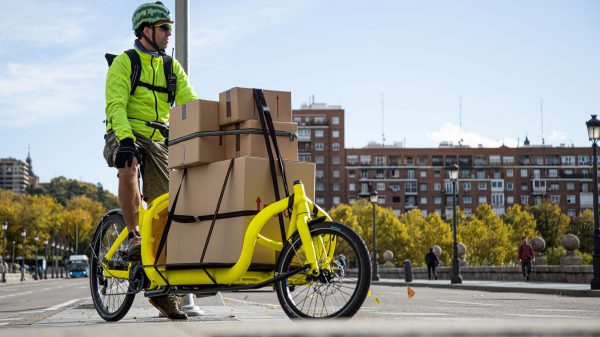In an era where climate change and environmental degradation are pressing concerns, starting a green venture is not just a noble endeavour but a smart business move. Sustainable businesses are rising as consumers increasingly seek products and services that align with their eco-conscious values.
Here’s a step-by-step guide to help you start your own sustainable business in 2024.
1. Understanding Green Ventures

Green ventures are businesses that integrate environmental sustainability into their core operations, products, or services. These enterprises aim to minimise their ecological footprint and promote eco-friendly practices. Whether reducing waste, using renewable resources, or creating products that help others live more sustainably, green ventures are designed to positively impact the planet.
Sustainability can be embedded in various aspects of a business, from sourcing raw materials responsibly to adopting energy-efficient manufacturing processes. The overarching goal is to operate in a way that benefits the environment, society, and the economy.
2. Market Research
Identify Demand: The first step in starting a green venture is understanding the market demand for sustainable products and services. Conduct surveys focus groups, and analyse market reports to gauge consumer interest in eco-friendly alternatives. Look for trends such as the rise in the popularity of zero-waste products or the increasing demand for renewable energy solutions.
Competitive Analysis: Look at existing green businesses to understand what they offer and identify gaps in the market. This analysis will help you discover opportunities where your business can stand out. For instance, if there’s a high demand for sustainable packaging but limited suppliers, this could be your niche. Examine competitors’ strengths and weaknesses, and consider how you can offer something unique or superior.
3. Business Plan Development
Vision and Mission: Define a clear vision and mission focusing on sustainability. Your vision should encapsulate the long-term impact you want to make, while the mission should outline the purpose of your business and how you plan to achieve your goals. For example, a vision could be “to eliminate plastic waste from the oceans,” while the mission could be “to produce biodegradable packaging solutions that replace single-use plastics.”
Product/Service Offering: Specify what sustainable product or service you will provide. Whether it’s organic skincare, eco-friendly packaging, or renewable energy solutions, ensure your offering addresses a genuine need in the market. Detail your product’s unique selling propositions (USPs) and how it stands out from the competition.
Target Audience: Identify the demographic that will benefit most from your offering. Understanding your target audience’s values and preferences will help tailor your marketing and product development efforts. Create detailed buyer personas that include demographics, psychographics, and buying behaviours.
4. Legal and Regulatory Considerations
Environmental Regulations: Ensure your business complies with all relevant environmental laws and regulations. This includes waste management, emissions standards, and resource usage guidelines. Non-compliance can lead to hefty fines and damage your reputation. Keep abreast of changes in regulations and be proactive in meeting and exceeding them.
Certifications: Obtain necessary eco-certifications such as organic, fair trade, or LEED certification for buildings. These certifications enhance your credibility and reassure customers that your business meets high environmental standards. Certifications can also open doors to new markets and customer segments that prioritise sustainability.
5. Funding and Financial Planning

Grants and Subsidies: Explore government and private grants available for sustainable businesses. Many organisations offer financial assistance to support eco-friendly initiatives. Research various funding opportunities and prepare compelling applications that highlight your business’s environmental impact.
Investors: Attract investors who are interested in green ventures. Pitch your business’s long-term profitability and environmental impact to secure funding from like-minded investors. Highlight the growing market for sustainable products and the potential for significant returns on investment.
Budgeting: Plan for initial and operational costs, including eco-friendly materials and technologies. Create a detailed budget that covers all aspects of your business, from production to marketing. Consider using financial software to track expenses and revenue, and adjust your plans as necessary to stay on track.
6. Sustainable Operations
Supply Chain Management: Source environmentally friendly materials and products. Work with suppliers who share your commitment to sustainability and ensure the entire supply chain adheres to green practices. Establish long-term partnerships with suppliers who prioritise sustainability.
Energy Efficiency: Implement energy-saving measures in production and operations. This could include using renewable energy sources, upgrading energy-efficient machinery, and optimising processes to reduce energy consumption. Conduct energy audits regularly to identify further savings opportunities.
Waste Reduction: Develop strategies to minimise waste and promote recycling. Consider implementing a circular economy model in which products are designed for reuse, repair, and recycling. Encourage customers to return products for recycling or repurposing and offer incentives for doing so.
7. Marketing and Branding
Green Branding: Emphasise your commitment to sustainability in branding and advertising. Use eco-friendly packaging, promote your green certifications, and highlight your environmental efforts in marketing materials. Create a brand story that resonates with eco-conscious consumers and showcases your dedication to the planet.
Digital Presence: Utilise social media and other digital platforms to reach eco-conscious consumers. Share your sustainability journey, engage with your audience through eco-friendly tips and updates, and build a community around your brand. Use content marketing to educate and inform your audience about sustainable practices.
Community Engagement: Partner with local communities and eco-friendly organisations to build a strong reputation. Participate in community events, support local environmental initiatives, and collaborate with other green businesses. Building a strong local presence can enhance your credibility and foster customer loyalty.
8. Measuring Impact

Sustainability Metrics: Set up metrics to measure your business’s environmental impact. Track key performance indicators such as carbon footprint, waste reduction, and resource usage to assess your progress. Use tools and software designed for sustainability reporting to streamline this process.
Continuous Improvement: Regularly review and improve your sustainable practices. Stay updated with the latest developments in sustainability and be willing to adapt and innovate to enhance your environmental impact. Implement a culture of continuous improvement where employees are encouraged to suggest and implement eco-friendly initiatives.
9. Scalability and Growth
Expansion Plans: Plan for sustainable growth, ensuring that scaling operations do not compromise environmental goals. As your business grows, maintain your commitment to sustainability by carefully managing resources and operations. Consider how you can expand your business while maintaining your commitment to sustainability. For example, if you start locally, plan to expand regionally, nationally, or even globally while ensuring your sustainable practices are scalable.
Innovation: Stay updated with the latest sustainable technologies and practices. Invest in research and development to continually innovate and improve your products and processes. This could involve developing new eco-friendly products, improving production methods to reduce environmental impact, or adopting new technologies that enhance sustainability.
Collaborations and Partnerships: Form strategic partnerships with other green businesses, non-profits, and government agencies to leverage resources, share knowledge, and amplify your impact. Collaborations can lead to innovative solutions and open up new markets.
Case Studies and Success Stories

To further illustrate the potential of green ventures, consider these success stories:
Patagonia: This outdoor clothing brand has built a reputation for sustainability by using recycled materials, promoting fair labor practices, and donating a portion of profits to environmental causes. Patagonia’s commitment to sustainability has earned it a loyal customer base and strong brand equity.
Tesla: As a leader in electric vehicles, Tesla has revolutionised the automotive industry by promoting zero-emission transportation. Tesla’s success demonstrates the potential for green ventures to disrupt traditional industries and drive significant environmental change.
Seventh Generation: This company produces eco-friendly household products focusing on sustainability, transparency, and social responsibility. Seventh Generation’s products are designed to reduce environmental impact, and the company advocates for environmental justice and public policy reforms.
Conclusive Thoughts
Starting a sustainable business in 2024 requires careful planning, commitment, and a passion for the environment. By following these steps, you can create a green venture that not only contributes positively to the planet but also meets the growing consumer demand for eco-friendly products and services. Embrace sustainability, and you’ll find that it’s not just good for the environment—it’s good for business, too.
Sustainable businesses are uniquely positioned to address some of the most pressing environmental challenges while also capitalising on a growing market of eco-conscious consumers. By integrating sustainability into every aspect of your business—from product development to marketing—you can build a brand that resonates with today’s environmentally aware consumers and contributes to a healthier planet.























































